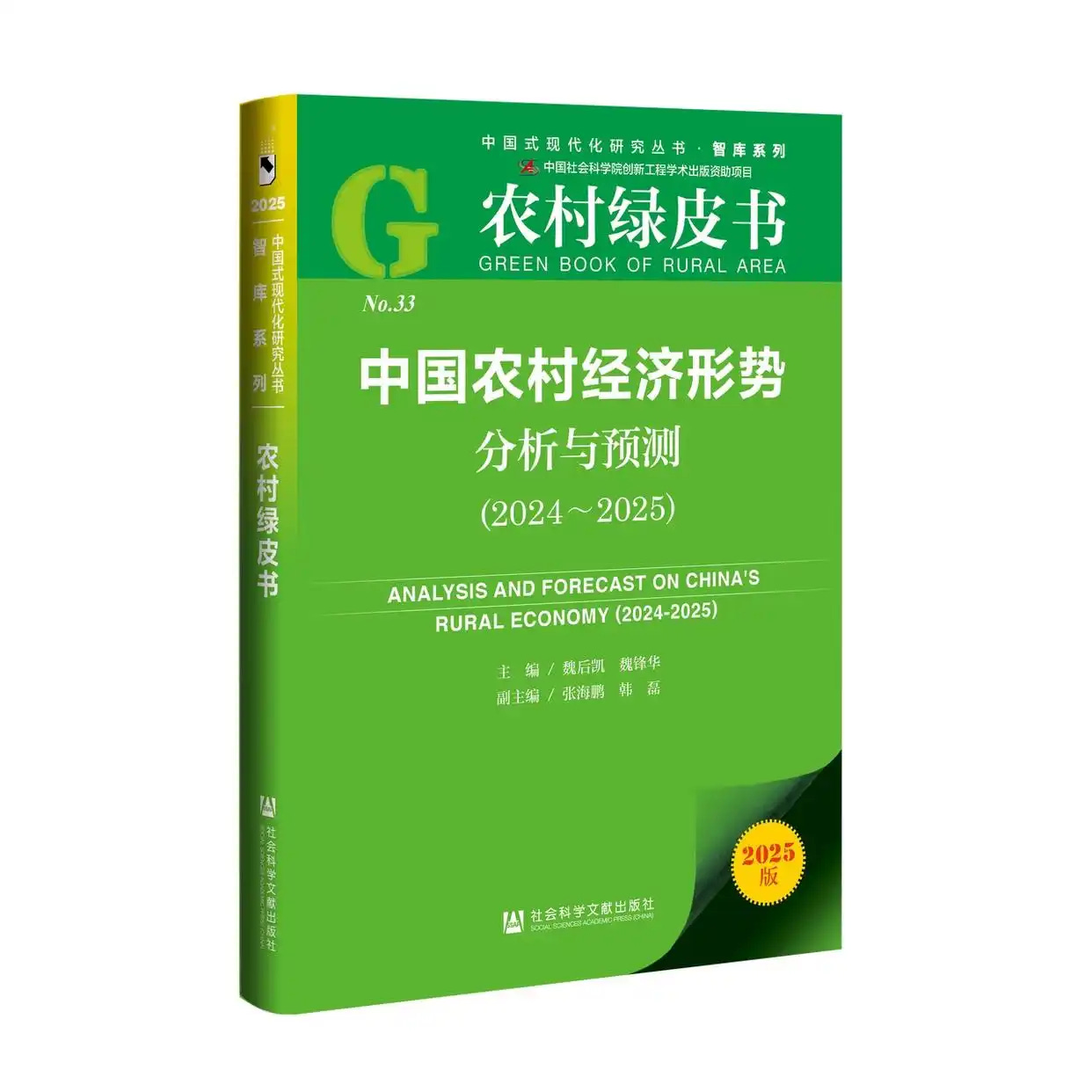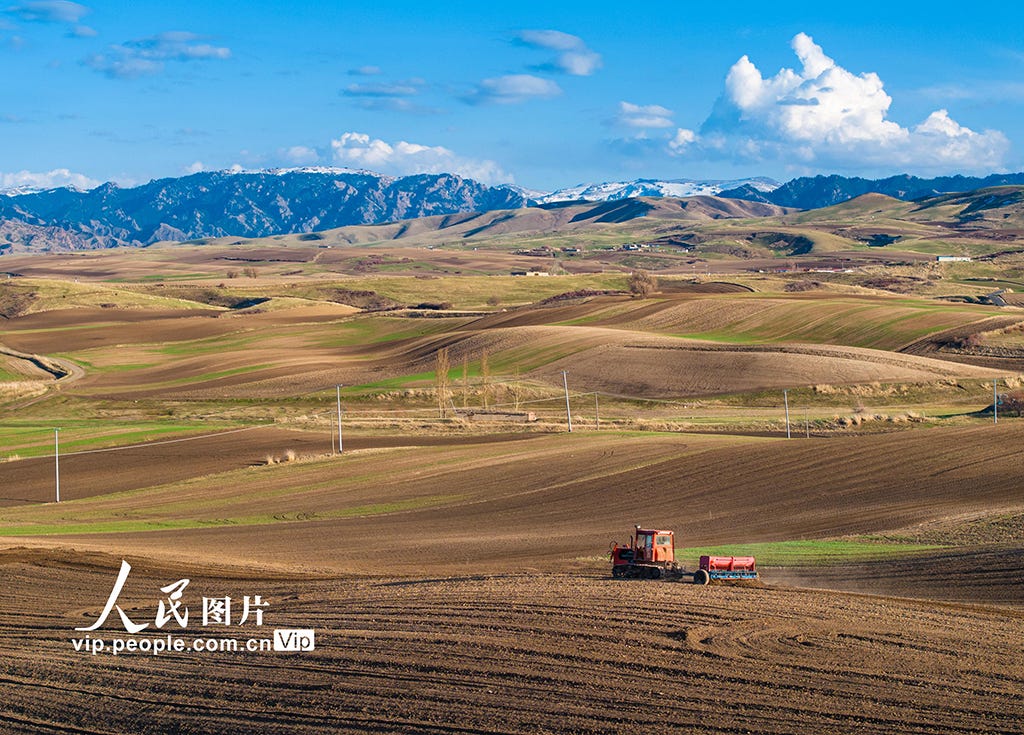The Harvest: This Week in Rural China – Dispatch No. 20 (2 May 2025)
The Rural Green Book, migrant worker poetry, rural reforestation in Tibet, and state media's call for youth to head west.
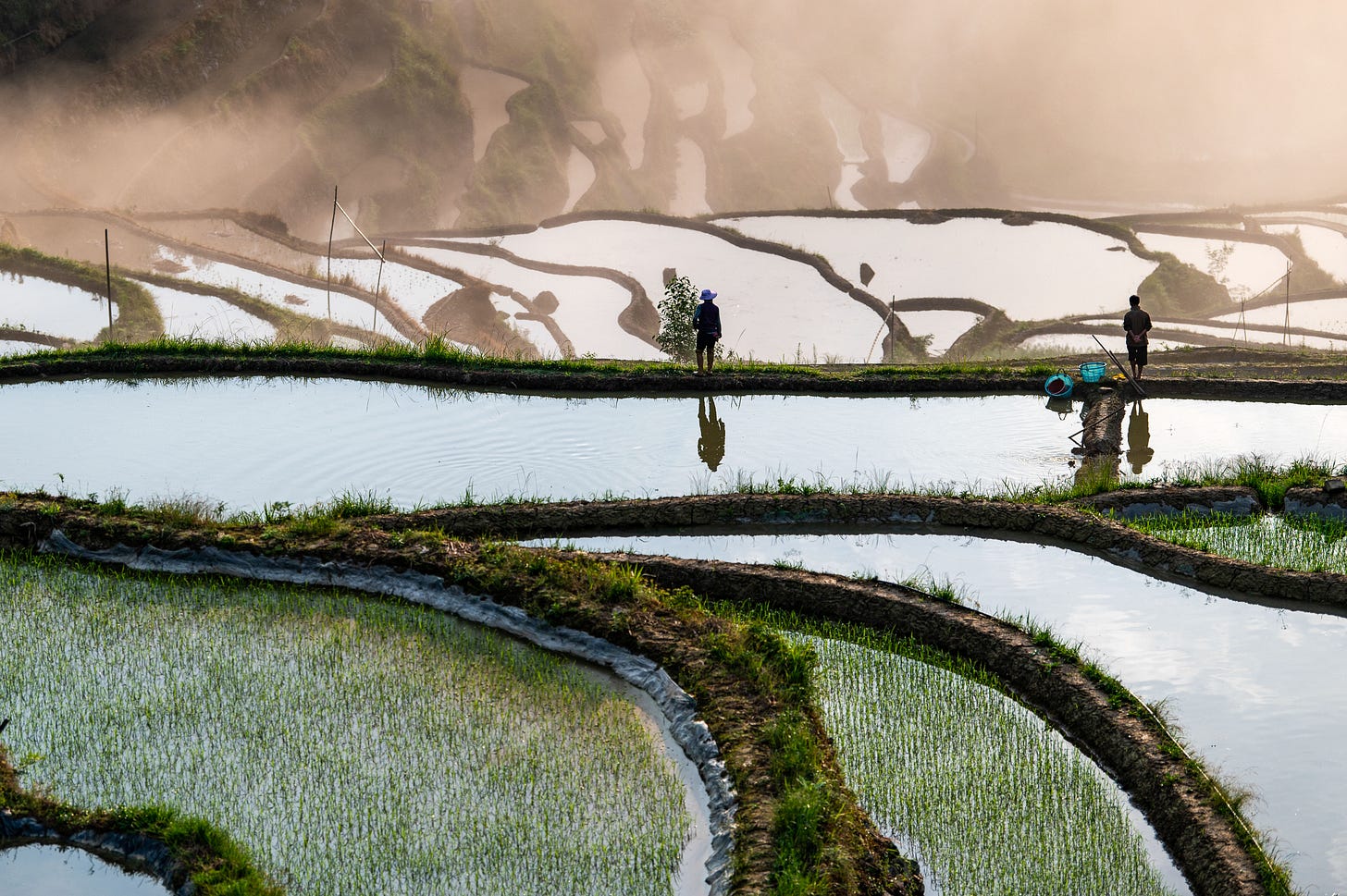
Welcome to the 20th edition of The Harvest, your weekly roundup of stories from China beyond the skylines.
This Week in Rural China:
China’s Rural Green Book Offers Rosy Outlook Amid Deeper Uncertainties
Factory Poet Goes Viral as Migrant Workers’ Struggles Resurface
Chinese Labour Day Honours Highlight Rural Reforestation Drive in Tibet
State Media Amplifies Call for Youth to Build the West
I always welcome your insights, as your feedback helps shape the direction of every dispatch. Please share your thoughts in the comments below or reach me at nathan@thisweekinruralchina.com.
As always, The Harvest remains free for all readers. If you find value in these dispatches and want to support the continued work behind them, consider becoming a free or paid subscriber. Your support helps sustain this project and ensures we can continue publishing consistently.
Now, let’s dive into this week’s stories:
China’s Green Book of Rural Areas Offers Rosy Outlook Amid Deeper Uncertainties
On 30 April, the Rural Development Institute of the Chinese Academy of Social Sciences (中国社会科学院农村发展研究所) and Social Sciences Academic Press (社会科学文献出版社) jointly released the latest edition of the Green Book of Rural Areas: Analysis and Forecast of China’s Rural Economy (2024–2025) (农村绿皮书:中国农村经济形势分析与预测 2024~2025). The annual report presents a confident picture of China’s countryside, forecasting that average rural per capita disposable income will rise to 24,000 yuan in 2025, driven by steady economic expansion, record grain production, and state-led investment.
According to the book, China’s primary sector grew by 3.5% in real terms in 2024, contributing 5.3% to the national GDP. Grain output reached a historic high of 706.5 million tonnes. At the same time, fixed-asset investment in agriculture, forestry, animal husbandry, and fisheries rose by 6.4%. Food processing saw robust growth, with investment in some segments up more than 20%.
Rural consumption climbed 4.3%, pushing its share of national retail sales to 13.7%. Meanwhile, the agricultural trade deficit narrowed by 16.7%, with corn imports dropping nearly 50% amid shifting trade dynamics. Rural incomes continued to rise, with the average disposable income increasing by 6.3% to 23,119 yuan and a 6.5% rise in formerly impoverished counties. Migrant workers’ monthly wages grew 3.8% to an average of 4,961 yuan.
However, for all its optimism, the Green Book is not without controversy. With both authoring institutions closely tied to the state, it’s unclear if the Green Book reflects economic realities or reinforces political narratives.
Between Projection and Performance
The Green Book’s framing follows a familiar rhetorical pattern, emphasising “high-quality development” (高质量发展) and the long-running “三农” agenda (agriculture, rural areas, and farmers). However, these terms, often used in state communications, remain loosely defined in practice, offering more ideological comfort than analytical precision.
The report claims success in “targeted poverty alleviation” (精准扶贫), a flagship campaign declared complete nearly five years ago. Nevertheless, no detail is provided on rural displacement, land-use disputes, environmental degradation, or regional disparities—all of which remain significant issues in China’s countryside. The voices of rural people themselves are notably absent.
The Green Book praises falling corn imports and a shrinking trade deficit. However, it avoids deeper reflection on China’s structural reliance on foreign agricultural markets, especially U.S. soybeans. It cites “changes in U.S. trade policy” as a risk to food security in 2025, an ambiguous understatement to say the least.
The Missing Bits
Migrant workers—whose remittances underpin rural consumption—are treated almost as an afterthought. The 3.8% rise in their wages is noted. However, there is no mention of the hukou system that excludes many from urban public services or their work’s precarious, transient nature in a challenging economic future. These realities distort rural income statistics, making them appear more robust than they may be in practice.
Environmental concerns are also glossed over. The Green Book boasts of increased grain yields. However, it fails to address the unsustainable farming practices—excessive fertiliser use, groundwater depletion, and degraded soils—that make such gains fragile. Climate change, too, receives scant attention despite its growing threat to China’s food system.
Between Projection and Performance
Looking to 2025, the Green Book anticipates further gains: a rural income rise to 24,000 yuan, grain output stabilising around 700 million tonnes, and continued growth in agriculture-related industries at around 5%. Pork prices are expected to fall, while maize may tick upwards as beef and dairy rebound.
However, these forecasts read more like targets than guarantees—aspirations shaped by the priorities of the 14th Five-Year Plan and the state’s drive for “deepening reforms.” Without independent data, scrutiny, or grassroots accountability, it is not easy to know how much of this rural renaissance is tangible and how much is statecraft.
Ultimately, the Green Book offers a polished image of the countryside—fertile ground for growth, stability, and prosperity. Yet behind this lies a more complex terrain: ecological stress, regional inequality, and an economy heavily dependent on the unseen labour of millions who migrate and remit. Until these complexities are acknowledged and rural voices are given equal weight to planners in Beijing, optimism alone will not be enough.
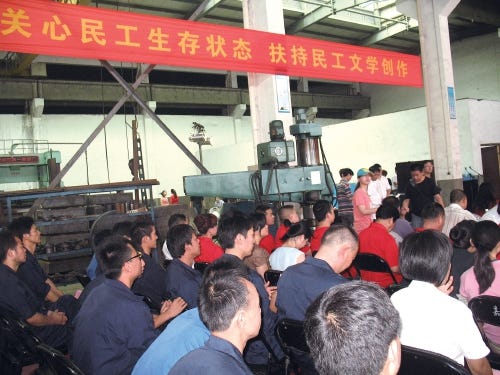
Factory Poet Goes Viral as Migrant Workers’ Struggles Resurface
A viral video this week showing a Foxconn worker reciting poetry in his dormitory in Henan has drawn attention to the lives of China’s migrant workers, reminding many of the once-vibrant genre of dagong wenxue (打工文学)—“migrant worker literature.” The video, which features the worker reading verses about exhaustion, isolation, and dreams deferred, has sparked widespread resonance among viewers, with one netizen writing, “He speaks for all of us.”
The resurgence of interest in migrant worker poetry highlights ongoing issues of exploitation and neglect faced by rural migrants. Although the video is recent, its content is not. Over two decades ago, writers like Li Mingliang were already documenting the lives of migrant workers through poetry, capturing the hardships of factory life and the personal toll it took on workers.
Li moved to Shenzhen in 1999, working in a Taiwanese-owned electronics factory. Despite the demanding and exhausting nature of the work, Li began writing poetry during rare moments of rest. One of his early works, “Overtime, Overtime, and More Overtime!” (加班, 加班, 还有更多加班!), reflected the gruelling nature of factory labour. At the time, dagong wenxue magazines were popular among workers, circulating stories that told the raw realities of migrant life. In 2006, his paper on the legal rights of migrant workers was presented at a provincial law symposium, where he was the only speaker without a formal degree.
As the viral video of the Foxconn poet spreads, it underscores the enduring relevance of dagong wenxue, reminding netizens of the human lives behind China’s economic rise. It also highlights that, for now at least, the written word remains one of the few ways migrant workers can share their voice.
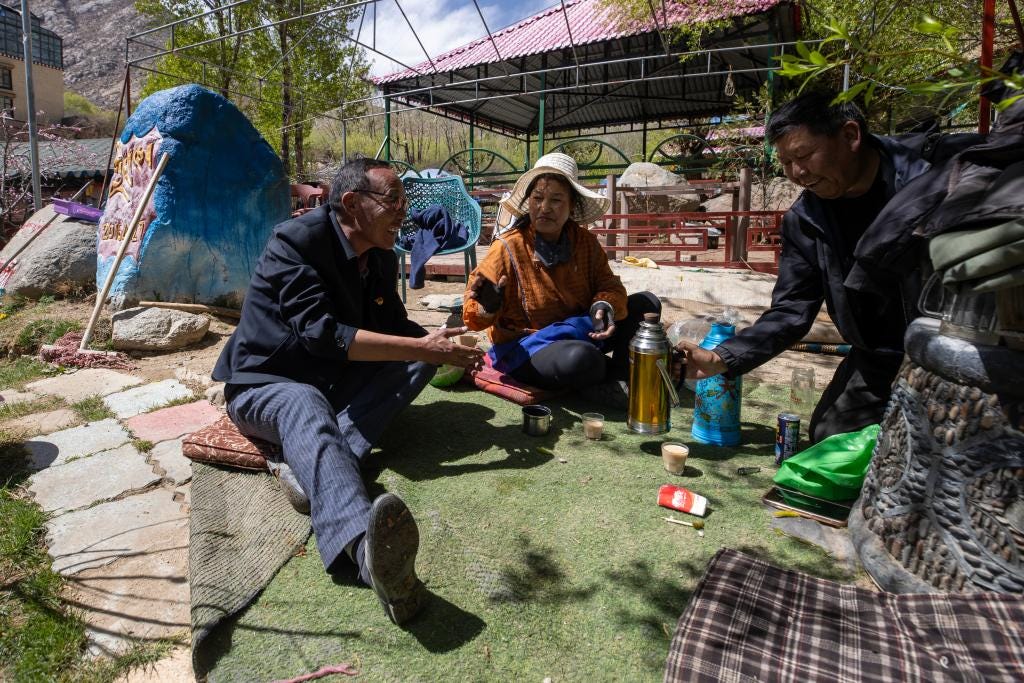
Chinese Labour Day Honours Highlight Rural Reforestation Drive in Tibet
China’s annual Labour Day celebrations have brought national attention to a small Tibetan village, where a decade-long campaign to reverse environmental degradation has become a model for rural revitalisation.
Nima, a village official in Viwa Village on the outskirts of Lhasa, was named one of China’s 2025 “National Labour Models” this week—an award given to individuals seen as exemplary contributors to the country’s development goals.
His recognition highlights a broader shift underway in parts of rural Tibet, where authorities are promoting ecological restoration and sustainable tourism as alternatives to traditional herding.
In recent years, Viwa, once known for wind-blown dust and depleted hillsides, has transformed into what local media now call Lhasa’s “back garden” — a patchwork of reforested slopes, picnic areas, and small-scale tourist ventures.
Since becoming party secretary in 2017, Nima has led efforts to expand the village’s collectively managed forest area from 400 to over 1,800 acres. The reforestation drive launched over a decade ago involved selecting native and drought-resistant species — such as Tibetan willows and sea buckthorn — and convincing herding families to reduce grazing in favour of long-term environmental and economic gains.
To support this shift, local government bodies provided technical support and helped promote eco-tourism initiatives such as homestays and traditional craft sales. Average annual incomes in the village have reportedly risen from under 7900 yuan a decade ago to more than 36800 yuan today.
Perhaps noteworthy for a party secretary, Nima’s role has been hands-on: clearing irrigation ditches, delivering winter supplies to elderly residents, and guiding tourists during busy periods. “A village official is like a housekeeper,” he told state media. “The work is fragmented, but it all matters.”
China has long used Labour Day to promote its development narratives through the stories of individuals in the media. This year’s focus on Nima not only shows one official’s dedication but also the state’s broader agenda: replacing extractive livelihoods with environmentally framed, state-supported alternatives.

State Media Amplifies Call for Youth to Build the West
This week, state media have significantly ramped up their messaging around youth involvement in developing the nation’s western regions. The push is framed within a broader strategy to address the economic disparities between China’s eastern coastal areas and its underdeveloped western provinces, a priority for President Xi Jinping. The media blitz comes amid growing calls for the younger generation to take an active role in shaping the future of these regions, both through voluntary work and professional development.
Central to this message is the slogan “Youth Builds Dreams in the West” (青春筑梦西部), which has been widely circulated across television, print, and digital platforms. This slogan is part of a broader narrative that encourages young people to contribute to the “Western Development Plan” (西部计划), a long-standing initiative aimed at bringing skilled workers, particularly graduates, to less developed western provinces. This week’s campaign highlights the call to “serve the motherland” (报效祖国), framing the programme as a patriotic duty for youth to help bridge the socio-economic gap between China’s regions.
State media have spotlighted stories of youth like Peng Zhengmin, a 24-year-old volunteer in Xinjiang, who embodies the message of “the more difficult the place, the more we need to stay” (越是艰苦的地方,越需要有人坚守). By focusing on real-life examples, the media reinforce the idea that such engagements are beneficial for the country and personally fulfilling for the youth involved, tying individual aspirations to national development.
Beyond voluntary work, the media are also promoting youth involvement in scientific innovation. The “Hualong One” (华龙一号) nuclear power project is presented as a key example of how young professionals are driving technological progress. The message is clear: youth engagement in the West isn’t just about regional development; it’s about contributing to China’s broader ambitions on the world stage.
Ultimately, this coordinated media push aims to foster a generation of young people who see their futures tied to the success of the Western regions. By using slogans and personal stories, the state is seeking to instil a sense of “responsibility of the era” (时代担当) in the youth, encouraging them to take up the mantle of development and serve the collective national interest.
Between Mountains and Waters - Photo of the Week for 2 May 2025
On 28 April 2025, in Pingtingshan Village, Zhaobishan Township, Mulei Kazakh Autonomous County—part of Xinjiang’s Changji Hui Autonomous Prefecture—a farmer steers a mechanised seeder across dry spring fields. This moment captures the start of the region’s crucial planting season, where increasingly industrialised agricultural practices replace centuries-old traditions of subsistence farming in rural China.
Photo by He Long / People’s Pictures.



